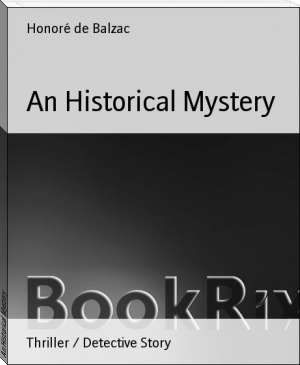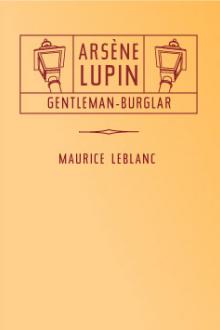The Forgotten Painting, Gabriel Farago [book recommendations for young adults .TXT] 📗

- Author: Gabriel Farago
- Performer: -
Book online «The Forgotten Painting, Gabriel Farago [book recommendations for young adults .TXT] 📗». Author Gabriel Farago
THE FORGOTTEN PAINTING
A Historical Mystery Novella
“Where it all began …”
Gabriel Farago
This book is brought to you by Bear & King Publishing.
Publishing & Marketing Consultant: Lama Jabr
Website: https://xanapublishingandmarketing.com
Sydney, Australia
First published 2016 © Gabriel Farago
The right of Gabriel Farago to be identified as the author of this work has been asserted by him in accordance with the Copyright Amendment (Moral Rights) Act 2000.
All rights reserved. Except as permitted under the Australian Copyright Act 1968 (for example, fair dealing for the purposes of study, research, criticism or review) no part of this publication may be reproduced, stored in a retrieval system, or transmitted in any form or by any means, electronic, mechanical, photocopying, recording or otherwise, without the written permission of the publisher.
This is a work of fiction. Names, characters, businesses, places, events and incidents are either the products of the author’s imagination or used in a fictitious manner. Any resemblance to actual persons, living or dead, or actual events is purely coincidental.

Signup for the author’s New Releases mailing list and get a free copy of The Jack Rogan Mysteries Starter Library as a welcome gift straight to your email inbox Click Here to Get Started!
Table of Contents
Title Page
Author’s Note
Warsaw Ghetto: 15 May 1943
McCormack & Sons of London, Auctioneers: December 2014
Monet’s Garden, Giverny: 1920
Outback Queensland: December, 1985
Berchtesgaden: Christmas Eve, 2008
Warsaw: December 2007
Imperial Crypt, Vienna: 2012
The Auction
A Coffin Key and a Boy with Psychic Powers: Imperial Crypt, Vienna: 2012
The Thirty-Five Million Pound Painting and The Megastar
The Old Man in the Swiss Mansion
The Email from Gstaad
Arrogance and Pride
The Examination
Warsaw Ghetto: August 1942
Warsaw Ghetto: the ‘sale’
The Verdict
The Fallout
Six Months Later
More Books by the Author
Jack Rogan Mysteries Starter Library
The Empress Holds the Key
The Disappearance of Anna Popov
The Hidden Genes of Professor K
Professor K: The Final Quest
The Curious Case of the Missing Head
The Lost Symphony
Jack Rogan Mysteries Box Set Books 1–4
About the Author
Connect with the Author
Author’s NoteA few weeks ago, my publicist left a message on my phone: ‘Must talk; urgent!’ Assuming something was wrong, I called her back at once. To the best of my recollection, this was the gist of our conversation:
‘You have a lot of new supporters out there and many have subscribed to your mailing list, follow you on Twitter, have become Facebook friends and are part of your launch team for The Hidden Genes of Professor K. They all want to know what’s happening’, she said.
‘They know what’s happening; we are about to release the new book’, I replied.
‘Yes, but we should reward them for their loyalty and support, and offer them something in return: a gift.’
‘What kind of gift?’
‘Well, they are all readers, so giving them something interesting to read would be a good idea ...’
I realised at once where this was heading. ‘What’s on your mind?’ I asked, expecting the worst.
‘A novella.’
‘What? I’ve just finished The Hidden Genes of Professor K, and you want me to write a novella? Now? Just like that?’
‘Exactly. No more than say, thirty-thousand words. Something exciting, a page-turner to showcase your writing. What would be really great is if you could feature your main characters and create a storyline that somehow touches on all of your three books. You know, come up with something really interesting that gives your readers something new, creates a little mystery and perhaps extends the plot,’ she prattled on, warming to the subject, ‘and answers some of the questions left open in the books and then ties everything together.’ She paused again, and took a deep breath.
‘But something that would also be of interest to new readers who are not familiar with your writing,’ she continued, her face flushed. ‘Does this make sense?’
‘Do you know what you’re asking?’
‘Come on … you can do it!’
‘I don’t know …’
‘And think about the new readers who haven’t come across the Jack Rogan Mysteries before. This would be an excellent way to introduce them to the series and pique their interest...’
‘I see what you mean.’
‘Good. And one more thing …’
‘Yes?’ I asked apprehensively.
‘I really need it now! This is urgent! So, get right into it.’
‘But I’m going to Japan next week; my walking tour, remember?’ I protested lamely. I always like to take some time off after finishing a book.
‘No problem! You can think about the storyline while you walk, and then write it all down when you get back. Perfect! Sorry; must dash!’
Well, that’s how The Forgotten Painting started. I did go to Japan the following week, and for twelve blissful days without internet, I walked part of the famous Nakasendo Way, a historic Shogun trade route crossing the mountains from Kyoto to Tokyo. Surprisingly, I did find time to think about the storyline, how to combine all the necessary elements suggested by my publicist, and turn them into a novella that is both exciting and entertaining. It was quite a challenge. This is what I came up with. My little gift to you. I hope you enjoy it.
However, before you start reading, just a few words about the novella as a literary genre:
Robert Silverberg in Sailing to Byzantium describes the novella as: “one of the richest and most rewarding of literary forms ... it allows for more extended development of theme and character than does the short story, without making the elaborate structural demands of the full-length book. Thus it provides an intense, detailed exploration of its subject, providing to some degree both the concentrated focus of the short story and the broad scope of the novel.”
Silverberg, Robert (2000). Sailing to Byzantium. New York; ibooks, inc. ISBN 0-7861-99059
The Forgotten Painting is a novella, and as such, it is of course much shorter than my novels. That was one of the reasons I have chosen this genre as the vehicle to introduce new readers to my work. However, I hope it will also entertain existing readers and give them something new and exciting to explore and enjoy.
New readers interested in finding out more about my writing, can find excerpts from my novels at the back.
Gabriel Farago
Leura, Blue Mountains: 1 August 2016
Warsaw Ghetto: 15 May 1943The major looked at the devastation around him, and smiled. It was over. The uprising that had begun on 19 April 1943 had been crushed. His superiors would be pleased. Streets littered with corpses, smouldering ruins and the stench of death was all that remained of the once crowded ghetto. A gentle rain had made the pools of congealed blood on the pavements slippery. Grey skies wept, lamenting the senseless brutality and slaughter. The major’s men, all SS, were methodically searching every building for the few remaining survivors who had gone into hiding. Everyone else was either dead, or had already been deported to concentration camps.
‘Herr Sturmbannfuehrer, in here!’ shouted one of the major’s men, waving from the other side of the street. ‘We found some.’ The major crossed the road and followed the man into the building. ‘They were hiding under the floorboards,’ continued the officer, ‘a whole family. Quite ingenious.’
The major looked at the bearded man sitting next to a frightfully thin woman and three children—two boys and a girl—cowering on the floor in front of him. The man was clutching a violin case to his chest. ‘Your name’, demanded the major.
‘Krakowski’, stammered the man, barely able to speak.
‘Your wife and children?’
The man nodded.
The major pulled his gun, a Luger, out of its holster and pointed it to the man’s head. ‘Are there any others hiding in this building?’
‘No’, whispered the man. ‘Spare them. It was my idea; let the children go.’ The major was about to pull the trigger when something caught his eye; a painting hanging on the wall above a sideboard. He lowered his gun, walked over to the painting and looked at it. ‘Yours?’ he asked.
‘Yes.’
‘Where did you get it from?’
‘It was given to me.’
‘By whom?’
‘The artist himself.’
‘How come?’ asked the major, and turned around to face the man on the floor.
‘It was after one of my concerts in Paris in 1920.’
‘You are a musician?’
‘Yes. I play the violin.’
For a while, the major looked thoughtfully at the wretch on the floor in front of him. Then he turned to the officer standing in the doorway and said, ‘Take them to the train station.’
‘Jawohl, Herr Sturmbannfuehrer’, replied the officer.
As soon as he was alone, the major reached into his tunic and pulled out a pocket knife. Extraordinary, he thought, staring at the signature at the bottom. Then he lifted the painting off the wall, placed it on the sideboard and began to carefully dismantle the frame.
McCormack & Sons of London, Auctioneers: December 2014The auctioneer glanced at his watch, adjusted his bowtie and looked at the excited crowd waiting for the auction to begin. The response had been overwhelming. With worldwide publicity creating unprecedented interest in the painting, a successful outcome seemed assured. He could recognise representatives of several leading galleries from around the world in the audience. They were rubbing shoulders with some of his regulars; all well-heeled collectors for whom money was no object when it came to acquiring something so precious and unique. All of them were potential buyers, even with the stratospheric estimates the painting was expected to reach. The high-profile art critics and journalists who were also in attendance, albeit for quite different reasons, would ensure the bidding would be spirited and go through the roof. It wasn’t often that a newly discovered painting by one of the most sought after impressionists came on the market. And then, there was more; so much more...
This only comes along once in a career, thought the auctioneer. Satisfied, he walked slowly across to the lectern in the middle of the podium and, letting the tension grow, picked up his gavel and surveyed the excited faces looking back at him. He knew that a successful auction was as much about theatre as it was about having the strategy and experience to work the bidders in the right way. Suddenly, a hush fell across the auction room; a ripple of excitement and expectation washed over the silent crowd, realising that several million pounds were about to change hands.
‘Ladies and gentlemen,’ began the auctioneer, ‘it gives me great pleasure to present to you one of the most exciting art offerings of our time: a newly discovered—or more accurately—rediscovered painting by none other than Claude Monet, one of the undisputed masters of impressionism.’ The auctioneer paused, once again for effect, and then





Comments (0)